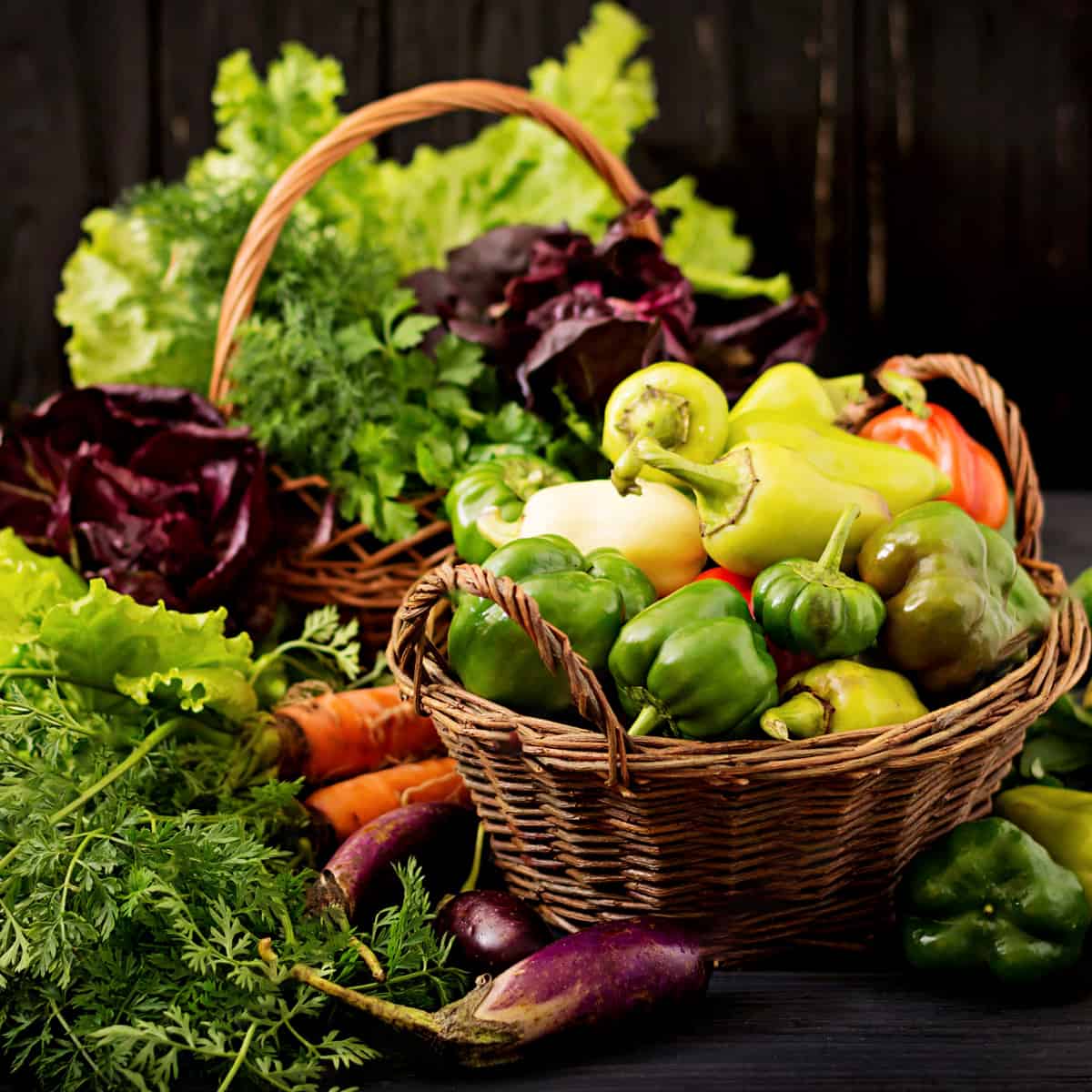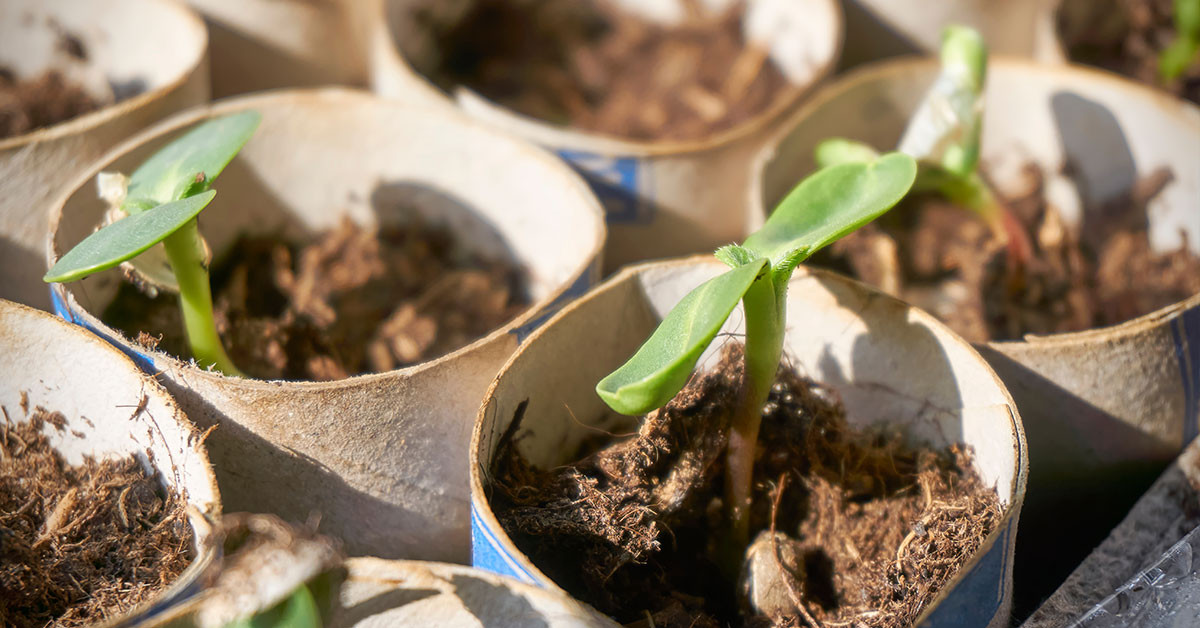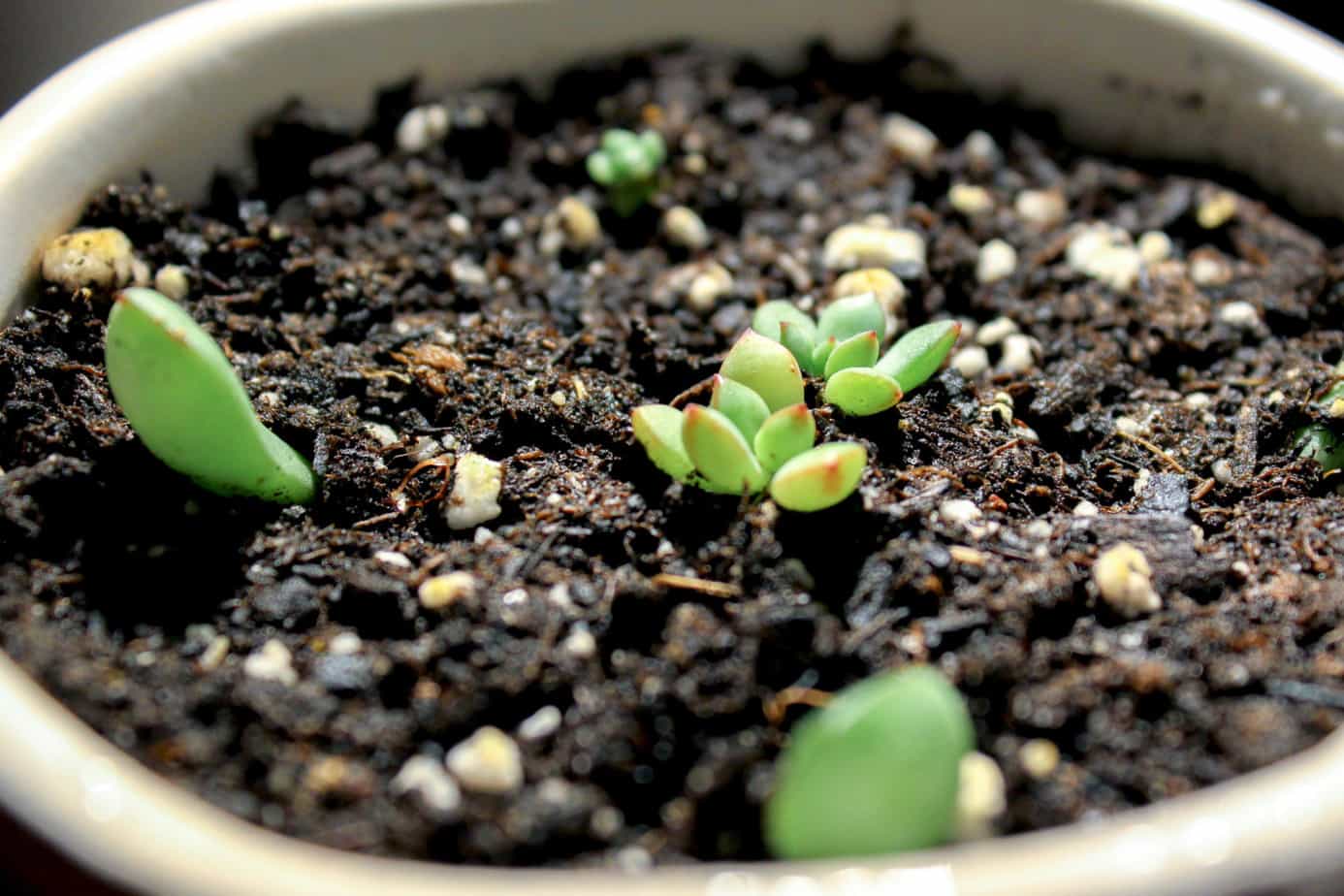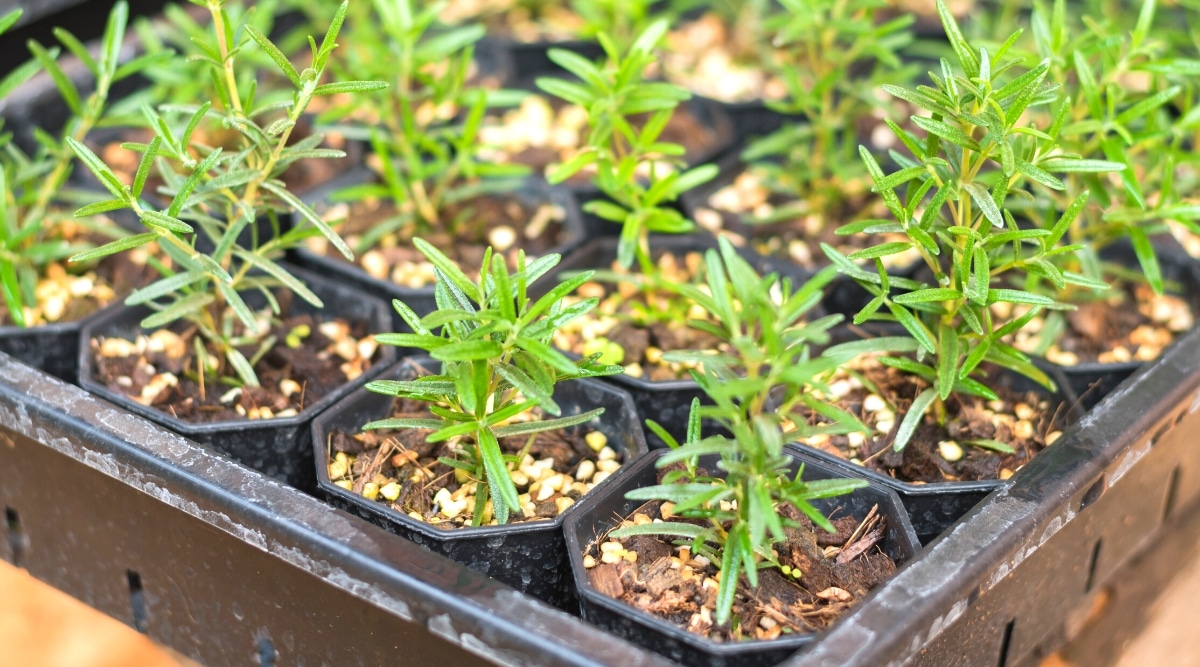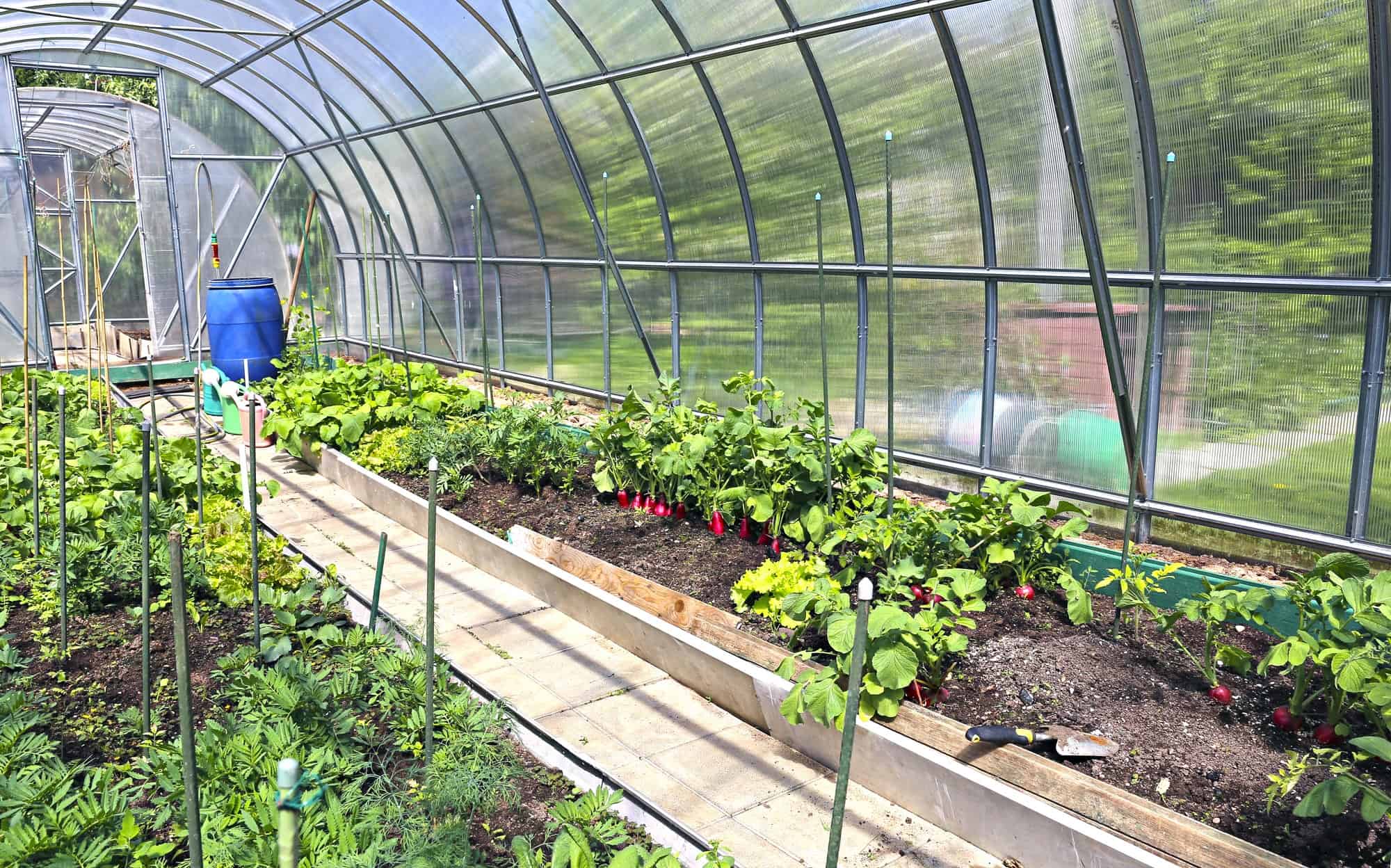Home>Gardening Basics>How Long Does It Take Fertilizer To Work
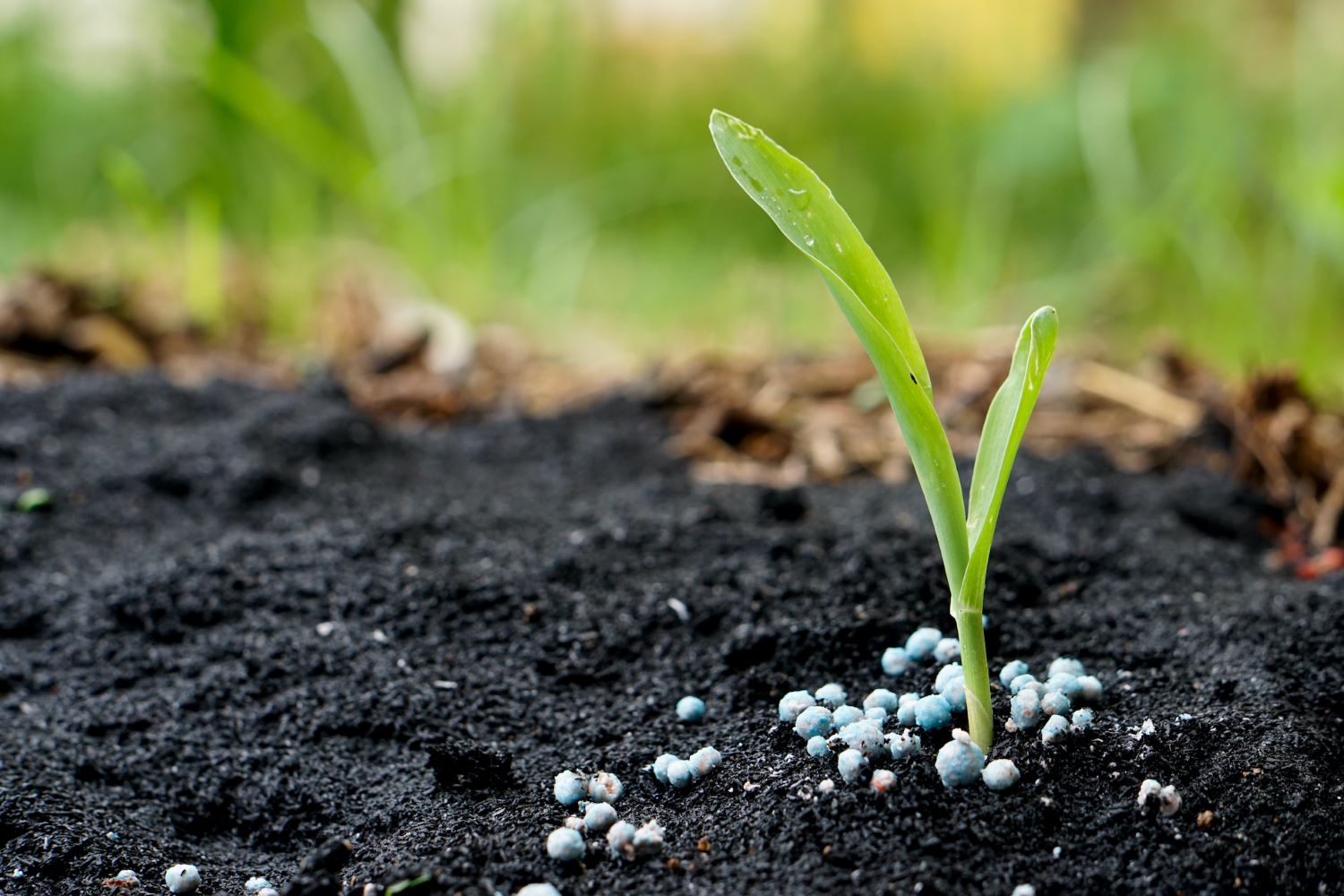

Gardening Basics
How Long Does It Take Fertilizer To Work
Modified: February 10, 2024
Learn how long it takes for fertilizer to work and get started on your gardening journey. Discover the key factors that influence its effectiveness and maximize your results.
(Many of the links in this article redirect to a specific reviewed product. Your purchase of these products through affiliate links helps to generate commission for Chicagolandgardening.com, at no extra cost. Learn more)
Table of Contents
Introduction
When it comes to gardening and agriculture, fertilizers play a vital role in ensuring healthy plant growth and bountiful harvests. However, many newcomers to gardening often wonder how long it takes for fertilizers to work and when they can expect to see results.
The effectiveness of fertilizers depends on various factors, including the type of fertilizer, the release rate of nutrients, soil conditions, and crop uptake. By understanding these factors and the time frames involved, gardeners can better plan their gardening activities and monitor fertilizer efficiency.
In this article, we will explore the different factors that affect fertilizer effectiveness, the types of fertilizers available, the release rates of nutrients, soil conditions and pH, crop uptake of fertilizers, application methods, and the time frames for observing fertilizer results. By gaining knowledge about these aspects, gardeners can make informed decisions and achieve optimal results with their fertilizer applications.
So, if you’ve ever wondered about the time it takes for fertilizer to work, keep reading as we delve into the fascinating world of fertilizer effectiveness and help you demystify the timing behind this essential gardening practice.
Factors Affecting Fertilizer Effectiveness
The effectiveness of a fertilizer is influenced by several key factors that determine how well it nourishes plants and promotes their growth. Understanding these factors can help gardeners make informed choices and optimize the results of their fertilizer applications.
1. Fertilizer Type: Different fertilizers come in various forms, such as liquid, granular, or slow-release pellets. Each type has its own release rates and nutrient compositions, impacting how quickly and for how long the nutrients become available to plants.
2. Nutrient Composition: Fertilizers contain specific ratios of essential nutrients, such as nitrogen (N), phosphorus (P), and potassium (K), as well as secondary and micronutrients. The composition of these nutrients affects plant growth, flowering, fruit development, and overall health.
3. Release Rate: Fertilizers can release nutrients at different rates. Some provide a quick burst of nutrients that are readily available to plants, while others release nutrients slowly over an extended period. The release rate depends on the fertilizer type and its formulation.
4. Soil Conditions and pH: The pH level and nutrient content of the soil can impact fertilizer effectiveness. Soil pH affects nutrient availability to plants, with some nutrients becoming less accessible in acidic or alkaline soils. Conducting a soil test can help determine the appropriate fertilizer and pH adjustments for optimal results.
5. Crop Uptake: Different plants have varying nutrient requirements, and their ability to take up fertilizer nutrients can vary as well. Understanding the specific nutrient needs of your plants and their growth stages can help tailor fertilizer applications to maximize nutrient uptake.
6. Application Methods: The way fertilizers are applied can also impact their effectiveness. This includes methods like surface broadcasting, banding, foliar spraying, or injecting nutrients directly into the soil. Considering the characteristics of your plants and the specific fertilizer being used can help determine the most suitable application method.
By considering these factors and tailoring fertilizer applications accordingly, gardeners can optimize the effectiveness of their fertilizers, resulting in healthier, more vigorous plants and improved overall gardening success.
Types of Fertilizers
There are various types of fertilizers available in the market, each with its own formulation and nutrient composition. Understanding the different types can help gardeners choose the most suitable option for their specific gardening needs. Here are some common types of fertilizers:
- Organic Fertilizers: Organic fertilizers are derived from natural sources such as plant and animal residues, compost, and manure. They release nutrients slowly as they break down, providing a steady supply of nutrients to plants over time. Organic fertilizers also improve soil structure and enhance microbial activity, leading to overall soil health.
- Inorganic or Synthetic Fertilizers: Inorganic or synthetic fertilizers are manufactured using chemical processes. They often have a higher nutrient concentration and provide a quick release of nutrients. Synthetic fertilizers are generally more affordable and can be customized to meet specific nutrient requirements. However, repeated and excessive use of synthetic fertilizers can lead to nutrient imbalances and environmental concerns.
- Slow-Release Fertilizers: Slow-release fertilizers are designed to release nutrients gradually over an extended period, providing a consistent supply of nutrients to plants. They come in various forms, including coated pellets or granules, infused with osmotic agents or coated with insoluble materials. Slow-release fertilizers are especially beneficial for plants that require steady nutrient availability or for gardeners who prefer a low-maintenance approach.
- Liquid Fertilizers: Liquid fertilizers come in a liquid form and are mixed with water before application. They are quickly absorbed by plant roots and provide nutrients in a readily available form. Liquid fertilizers are often used for foliar feeding, where nutrients are applied directly to the leaves for fast absorption. They are also convenient for use in hydroponic systems or when a quick nutrient boost is needed.
- Controlled-Release Fertilizers: Controlled-release fertilizers are designed to release nutrients at an even rate over a specific period. They are typically encapsulated or coated, allowing for a regulated release of nutrients in response to temperature, moisture, or microbial activity in the soil. Controlled-release fertilizers provide a more controlled and sustained nutrient supply, reducing the risk of nutrient loss through leaching or runoff.
Each type of fertilizer has its advantages and considerations, and the choice depends on factors such as plant requirements, soil conditions, and personal preferences. It’s important to read the product labels, follow the recommended application rates, and consider the specific needs of your plants to achieve the best results.
Nutrient Release Rates
The release rate of nutrients from fertilizers is an important factor to consider when determining their effectiveness and the timing of their impact on plants. Different fertilizers have varying release rates, which determine how quickly and for how long nutrients become available to plants. Here are some common nutrient release rates:
- Quick-Release Fertilizers: Quick-release fertilizers, also known as soluble or fast-acting fertilizers, dissolve rapidly in water and provide an immediate supply of nutrients to plants. These fertilizers release nutrients within a few days of application, enabling plants to take up the nutrients quickly. They are particularly useful in situations where rapid growth or nutrient correction is needed.
- Slow-Release Fertilizers: Slow-release fertilizers, as the name suggests, release nutrients gradually over an extended period. They are designed to supply a steady stream of nutrients to plants, promoting balanced and sustained growth. Slow-release fertilizers can provide nutrients for weeks to months, depending on the specific formulation. These fertilizers are often beneficial for plants with long growing seasons or for gardeners who prefer a more hands-off approach.
- Controlled-Release Fertilizers: Controlled-release fertilizers offer a more regulated and consistent nutrient release. These fertilizers are engineered to release nutrients based on environmental factors such as temperature, moisture, or microbial activity in the soil. They provide a steady supply of nutrients over an extended period, reducing the risk of nutrient loss through leaching or runoff.
- Continuous-Release Fertilizers: Continuous-release fertilizers provide a steady and continuous nutrient release, often lasting for several months. These fertilizers are usually in granular or pellet form and are coated with materials that control the release rate. Continuous-release fertilizers are convenient for long-term plantings and can reduce the frequency of fertilizer applications.
- Intermittent-Release Fertilizers: Intermittent-release fertilizers release nutrients in periodic bursts, providing a combination of quick and sustained nutrient availability. These fertilizers are commonly used in situations where plants require intermittent nutrient supply during specific growth stages or as a supplement to other types of fertilizers.
Choosing the right nutrient release rate depends on factors such as plant requirements, soil conditions, and your desired duration of nutrient availability. It’s important to read product labels, follow the recommended application rates, and consider the specific needs of your plants to ensure optimal fertilizer results.
Soil Conditions and pH
The condition of the soil, including its nutrient content and pH level, significantly impacts the effectiveness of fertilizers. Understanding soil conditions and pH is crucial for determining the appropriate fertilizer and ensuring optimal nutrient uptake by plants.
Soil Nutrient Content: The nutrient content in the soil directly affects the availability of nutrients to plants. Soil testing is a valuable tool for evaluating the nutrient levels in your soil. It provides information about the essential elements necessary for plant growth, such as nitrogen (N), phosphorus (P), potassium (K), as well as secondary and micronutrients. Based on the soil test results, you can select a fertilizer that complements the existing nutrient levels in the soil while addressing any deficiencies.
Soil pH: Soil pH is a measure of the acidity or alkalinity of the soil. It affects the availability of nutrients to plants as well as the activity of soil microorganisms that assist in nutrient breakdown and uptake. Most plants prefer a slightly acidic to neutral pH range (around 6 to 7), though specific preferences may vary. Soil pH outside the preferred range can impact nutrient availability and lead to nutrient deficiencies or toxicities. You can adjust soil pH by adding amendments such as lime to raise pH or sulfur to lower pH, based on the specific needs of your plants.
It’s important to note that different nutrients have varying levels of availability at different pH ranges. For example, phosphorus is less available in alkaline soils, while iron and certain micronutrients become less available in highly acidic soils. Conducting a soil test and considering the pH preferences of your plants can guide you in selecting the appropriate fertilizer and making any necessary soil amendments.
In addition to soil nutrient content and pH, other soil characteristics such as soil texture (sand, silt, or clay), drainage, and organic matter content also influence nutrient availability and fertilizer effectiveness. It’s essential to consider all these factors collectively to create an optimal soil environment for your plants.
By understanding soil conditions and pH, you can make informed decisions when selecting fertilizers and adjusting soil conditions to ensure that your plants receive the necessary nutrients in the most accessible form.
Crop Uptake of Fertilizer
The uptake of fertilizer nutrients by crops is a critical factor in determining the effectiveness of fertilizers. Different plants have varying nutrient requirements, and their ability to take up and utilize nutrients can depend on several factors.
Plant Nutrient Requirements: Each plant species has specific nutrient requirements for optimal growth and development. These requirements vary depending on factors such as the stage of plant growth, the type of plant (vegetables, fruits, flowers, etc.), and environmental conditions. It’s important to understand the nutrient needs of your specific crops and select fertilizers that provide the necessary nutrients in the appropriate ratios.
Root System: The health and development of a plant’s root system play a crucial role in nutrient uptake. Well-developed root systems with abundant root hairs have a larger surface area for absorbing nutrients from the soil. Proper soil moisture and aeration are essential for optimal root growth and nutrient uptake. Avoiding excessive watering or compacted soil will promote healthy root development and efficient nutrient uptake.
Timing of Fertilization: The timing of fertilizer application is vital for ensuring that nutrients are available when crops need them the most. For example, applying phosphorus-rich fertilizer during the early stages of root development can help establish a strong root system. Nitrogen, on the other hand, is often applied during periods of active vegetative growth to promote leafy growth.
Fertilizer Formulation: The formulation of the fertilizer can affect nutrient availability and uptake. Some nutrients may be more readily available in specific forms or may require specific soil conditions or microbial activity for release. Matching the fertilizer formulation to the nutrient requirements and preferences of the crops can maximize nutrient uptake.
Environmental Factors: Environmental factors such as temperature, humidity, sunlight, and rainfall can influence crop nutrient uptake. Temperature affects nutrient solubility in the soil, while rainfall can lead to leaching or runoff, potentially affecting nutrient availability. It’s important to consider these factors and make adjustments to fertilizer application and irrigation practices accordingly.
Monitoring the growth and appearance of crops is crucial for assessing fertilizer effectiveness. Signs of nutrient deficiencies or toxicities, such as yellowing leaves, stunted growth, or distorted foliage, can indicate imbalances in nutrient uptake. Regularly checking plants for signs of nutrient-related issues allows for timely adjustments in fertilizer application.
By understanding the crop’s nutrient requirements, promoting healthy root development, timing fertilizer applications appropriately, and considering environmental factors, gardeners can optimize fertilizer uptake by crops and ensure healthy, productive plants.
Application Methods
The method of fertilizer application plays a crucial role in its effectiveness and the overall nutrient uptake by plants. There are various application methods available, each with its own advantages and considerations. Understanding the different application methods can help gardeners choose the most suitable approach for their specific gardening needs.
Surface Broadcasting: Surface broadcasting is the most common and straightforward method of fertilizer application. It involves distributing the fertilizer evenly over the soil surface around the plants. This method works well for large open areas or when the nutrient requirements are similar for all the plants within the designated area. However, surface-applied fertilizers may be susceptible to nutrient loss through leaching or volatilization if not properly managed.
Banding: Banding involves placing the fertilizer in a concentrated band or strip in close proximity to the plant roots. This method ensures that the nutrients are placed where they are most needed, improving their access to the root system. Banding is particularly useful for row crops or individual plants, as it reduces fertilizer waste and enhances nutrient efficiency.
Foliar Spraying: Foliar spraying involves applying liquid fertilizer directly to the leaves of plants. This method allows for quick nutrient absorption through the plant’s stomata, bypassing the soil uptake process. Foliar spraying is often used for supplying micronutrients or correcting specific nutrient deficiencies. It is important to follow the recommended dilution rates and application frequencies to avoid leaf burn or damage.
Injection: Injection involves injecting liquid fertilizer directly into the soil around the root zone using specialized equipment. This method ensures precise nutrient placement and minimizes nutrient losses through volatilization or erosion. Injection is commonly used in commercial agriculture and large-scale gardening operations.
Drip Irrigation: Drip irrigation systems can be modified to include the injection of liquid fertilizers into the irrigation water. This allows for the slow-release of nutrients directly to the root zone, ensuring efficient uptake by plants. Drip irrigation with fertilization is effective for crops with consistent water requirements and facilitates precise nutrient management.
Soil Incorporation: Soil incorporation, also known as soil mixing or tilling, involves blending the fertilizer into the soil prior to planting. This method ensures that the nutrients are evenly distributed throughout the root zone and readily available to plants. It is commonly used for granular or powdered fertilizers and is beneficial for improving nutrient distribution in large garden beds or cultivated areas.
When choosing an application method, consider the characteristics of your plants, the type of fertilizer being used, the size of the garden or field, and the overall efficiency and convenience of the method. When applying fertilizers, always follow the recommended dosage rates, take precautions to prevent runoff or leaching, and monitor the response of your plants to ensure optimal nutrient uptake and growth.
Time Frame for Fertilizer Results
One of the most common questions among gardeners is how long it takes for fertilizers to show visible results. The time frame for observing fertilizer results can vary depending on several factors, including the type of fertilizer, application method, soil conditions, and plant species. Here is a general guide to help you understand the time frame for fertilizer results:
Quick-Release Fertilizers: Quick-release fertilizers, such as soluble or fast-acting fertilizers, provide a rapid supply of nutrients to plants. In many cases, you can expect to see visible results within a few days to a couple of weeks after application. These fertilizers are particularly effective when plants require a quick nutrient boost or when treating nutrient deficiencies.
Slow-Release Fertilizers: Slow-release fertilizers release nutrients gradually over time, providing a sustained nutrient supply. The effects of slow-release fertilizers are typically evident over a longer period, ranging from several weeks to a few months. Since slow-release fertilizers deliver nutrients at a slower rate, the growth response may be gradual, but the sustained nutrient availability promotes steady and balanced plant growth.
Plant Development: Different plants have varying growth rates and development timelines. As a result, the time frame for observing fertilizer results can also differ. Some plants may respond quickly to fertilizers, exhibiting visible improvements within days or weeks, while others may take longer to show noticeable changes in growth, flowering, or fruit production. Understanding the growth habits and development stages of your plants will give you a better idea of when to expect visible fertilizer results.
Soil Conditions: The condition of the soil, including its nutrient content, pH level, and organic matter, can influence the uptake and availability of nutrients to plants. If the soil is deficient in certain nutrients or if the pH levels are outside the optimal range, it may take longer for plants to respond to fertilizer applications. Adjusting soil conditions and ensuring a balanced nutrient supply will contribute to more timely and noticeable fertilizer results.
Environmental Factors: Environmental conditions, such as temperature, sunlight, and moisture, also play a role in fertilizer effectiveness and plant growth. Favorable environmental conditions can enhance nutrient uptake and stimulate plant growth, leading to quicker and more pronounced fertilizer results. Conversely, unfavorable conditions, such as extreme heat, drought, or excessive rainfall, can impact nutrient availability and plant response to fertilizers.
It’s important to note that the time frame for fertilizer results may not be immediate or consistently uniform across all plants and conditions. Regular observation and monitoring of plant growth, foliage color, flowering, and fruiting will help you assess the effectiveness of your fertilizer applications and make any necessary adjustments in a timely manner.
Monitoring Fertilizer Efficiency
Monitoring the efficiency of fertilizers is crucial for ensuring optimal plant growth, preventing nutrient imbalances, and making necessary adjustments to fertilizer applications. Here are some ways to effectively monitor fertilizer efficiency:
Visual Observation: Regular visual observation of plants is one of the simplest and most effective ways to monitor fertilizer efficiency. Look for signs of healthy growth, such as vibrant foliage, strong stems, increased flowering, or abundant fruit production. Conversely, watch for symptoms of nutrient deficiencies or toxicities, such as yellowing leaves, stunted growth, or discolored foliage. Visual cues can provide valuable insights into the overall health and nutrient status of your plants.
Soil Testing: Regular soil testing allows you to assess the nutrient levels, pH, and other key soil parameters. Soil tests provide quantitative data about the nutrient content in the soil, helping you determine if any adjustments or amendments are necessary. Conduct soil tests before planting and periodically throughout the growing season to ensure proper nutrient management and identify any potential deficiencies or excesses.
Leaf Tissue Analysis: Leaf tissue analysis involves collecting plant leaves and sending them to a laboratory for nutrient analysis. This method provides accurate information about the nutrient status of the plants and can help identify any nutrient imbalances or deficiencies. Leaf tissue analysis is especially useful for diagnosing specific nutrient deficiencies and fine-tuning fertilizer applications for optimal plant health.
Observing Growth and Development: Track the growth and development of your plants over time. Monitor their height, spread, and overall vigor. Record the timing of flowering or fruit production. By comparing these measurements to the expected growth patterns for your specific plants, you can assess the effectiveness of fertilizers and identify any growth abnormalities that may indicate nutrient-related issues.
Keep Records: Maintaining detailed records of your fertilizer applications, including the type of fertilizer, application rates, and dates, can be incredibly valuable. By documenting your fertilizer practices and monitoring the growth and health of your plants, you can make data-driven decisions for future fertilizer applications. These records can also help identify patterns or trends in plant responses to different fertilizers or application methods.
Considering External Factors: In addition to monitoring your plants, it’s important to consider external factors that may contribute to fertilizer efficiency. Assess the impact of weather conditions, such as temperature, rainfall, or drought, on nutrient availability and uptake. Evaluate the influence of pest and disease pressure on plant health and nutrient utilization. By taking into account these external factors, you can better understand the results of your fertilizer applications and make more informed adjustments as needed.
A proactive and systematic approach to monitoring fertilizer efficiency will help you optimize the nutrient management process, ensure healthy plant growth, and maintain a fertile and productive garden or agricultural system.
Conclusion
Fertilizers play a vital role in promoting healthy plant growth and maximizing agricultural productivity. Understanding the factors that affect fertilizer effectiveness, the different types of fertilizers available, and the appropriate application methods is crucial for achieving optimal results.
Factors such as fertilizer type, nutrient release rates, soil conditions, crop uptake, and timing of fertilizer applications all play a role in determining the effectiveness of fertilizers. By considering these factors and tailoring fertilizer applications accordingly, gardeners and farmers can ensure that plants receive the necessary nutrients in the most accessible form.
Monitoring fertilizer efficiency through visual observation, soil testing, leaf tissue analysis, and tracking plant growth and development allows for timely adjustments and ensures that plants are receiving adequate nutrition. Keeping records of fertilizer applications and considering external factors such as weather conditions and pest pressure further enhances the understanding of fertilizer impacts.
Overall, the time frame for observing fertilizer results can vary depending on the type of fertilizer, plant species, environmental conditions, and soil characteristics. Quick-release fertilizers provide rapid results, while slow-release or controlled-release fertilizers offer a longer-lasting nutrient supply. Understanding these time frames helps set realistic expectations and enables gardeners to plan their fertilization strategies accordingly.
By optimizing fertilizer practices and constantly monitoring plant responses to fertilizers, gardeners and farmers can achieve healthier, more vigorous plants, improved crop yields, and sustainable agricultural practices.


